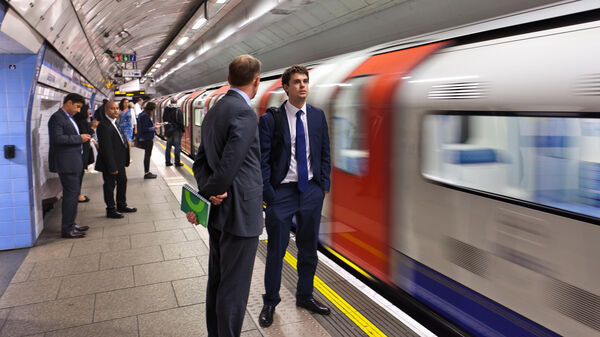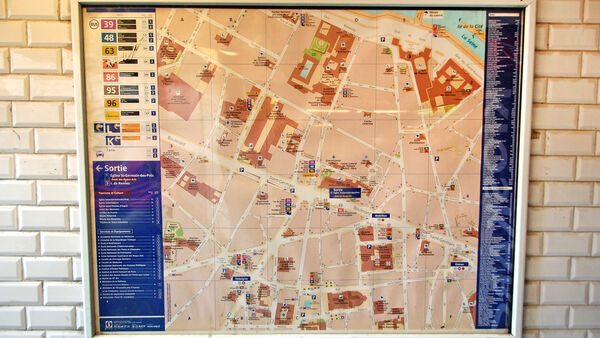Riding Europe’s Subways


By Rick Steves
Most of Europe's big cities are blessed with an excellent subway system, and wise travelers know that learning this network is key to efficient sightseeing.
European subways go by many names: "Metro" is the most common term on the Continent, but Germany and Austria use "U-Bahn." For Scandinavia, it's the "T-bane" in Oslo, "T-bana" in Stockholm, and "S-tog" in Copenhagen. In London, it's the "Tube" (to the British, a "subway" is a pedestrian underpass).
Subways generally operate from about 6 a.m. until midnight. Trains rarely follow a specific schedule, but just pass by at frequent but irregular intervals. Most systems have electronic signs noting when the next train will arrive.
Here are tips for smooth sailing on Europe's subways:
Study your map. Subway maps are posted prominently at the station and usually on board the train. They can also be found online as well as on most printed city maps. A typical subway map is a spaghetti-like tangle of intersecting colorful lines. The individual lines are color-coded, numbered, and/or lettered (and even named, in the case of London); their stations, including those at either end of the line, are also indicated. These end stations — while probably places you'll never go — are important, since they tell you which direction the train is headed and appear (usually) as the name listed on the front of the train.
A few cities (like Rome) have just two or three subway lines, while London has more than a dozen. Some cities' subways share the tracks with express commuter trains (such as Paris' RER and Germany's S-Bahn), which make fewer stops and can usually get you across town faster.
Plan your route. Determine which line you need, the name of the end station in the direction you want to go, and (if necessary) where to transfer to another line. In the station, you'll use this information to follow signs to reach your platform. When in doubt, ask. You can also use a public-transit app or mapping app to plan your journey, noting the subway line you want to take and the stop where you'll get off the train.
Validate your ticket. If you're using a paper ticket, you may need to validate it in a turnstile slot (don't forget to retrieve it) — watch to see what others do. If you have an all-day or multiday ticket, you may only need to validate it the first time you use it, or not at all (ask when you buy it). Don't throw away your ticket too soon — you may need to insert it in a turnstile to exit the system (the machine might keep your ticket if it's used up). Once you're out, toss or tear used tickets to avoid confusing them with unused ones. For contactless payment, you may need to tap on your way in and on your way out — watch what locals do or ask.
Keep alert. Follow signage carefully as you navigate through the station. Confirm that you're at the right platform — heading in the right direction — before boarding. Subways can get packed during rush hour. Try to steer clear of crowds and commotion; there are usually fewer people in the first and last cars.
Stick together. If you're with a companion or group, make sure everyone knows the name of your final stop before boarding, stays close together, and agrees on a game plan in case you get separated. If a subway is about to depart as you arrive on the platform, don't rush to catch it and risk leaving behind your companions; trains run frequently, and it's far easier to wait for the next departure than to reconnect a split-up group.
Get off at the right place. Once on the train, follow along with each stop. Most cars have an electronic screen showing the next stop. Sometimes the driver or an automated voice announces the upcoming stop — but don't depend on this cue, as a foreign name spoken by a native speaker over a crackly loudspeaker can be difficult to understand. Keep an eye out the window as you pull into each station; the station's name will be posted prominently on the platform or along the wall. If the train is crowded, move close to the doors one stop before you want to exit. When the train stops, the doors may open automatically, or you may need to open them yourself by pushing a button or pulling a lever. Don't panic — watch others and imitate.
If you need to transfer, follow the signs. Changing from one subway line to another can be as easy as walking a few steps to an adjacent platform — or a bewildering wander via a labyrinth of stairs and long passageways. Fortunately, subway systems are clearly signed — just follow along (or ask for help).
Exit the station. When you arrive at your destination station, follow exit signs up toward street level, keeping an eye out for posted maps of the surrounding neighborhood to help you get your bearings. Bigger stations have multiple exits, signposted by street name or nearby landmarks. Choosing the right exit will help you avoid extra walking and unnecessary forays through busy intersections.
Sample Subway Trip

Let's say you want to go from your hotel to the art museum on the other side of town. Your hotel is a five-minute walk from the Napoleon station on the A line. Note that the A line has two end stations: Outer Limits to the north and Suburb del Sud to the south. The art museum is on the B line, so you'll need to transfer at the station where these two lines intersect: Java Junction.
Here's how you'll do it:
- Entering the subway at the Napoleon station, follow signs to trains going in the direction of Outer Limits (the northern end station).
- Ride three stops to Java Junction, get off, and follow signs to transfer to line B (in the direction of East Forest).
- Ride the train two stops to the Michelangelo station.
- Use signs and the neighborhood map in the station (or a mapping app) to choose the exit closest to the museum and walk from there.
Congratulations — you've survived your first European subway trip!

